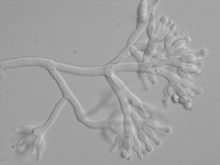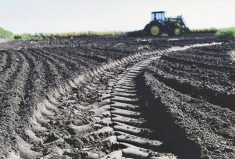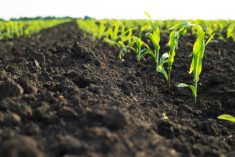Short term costs for long term gains – that’s what a Greenbelt Foundation report says farmers need to consider when it comes to building soil health.
Released in early 2022, The Greenbelt’s Towards a business case for soil health report compiled and analyzed field research data from different production practices in different cropping and cow-calf systems.
The idea was to identify cost and benefit numbers associated with cover cropping, tillage intensity, rotational practices, organic amendments and nutrient management and then make a business case for supporting soil.
Read Also

The forced Japanese-Canadian farmers of the Second World War
Manitoba’s sugar beet farms drew on displaced Japanese-Canadians from B.C. during the Second World War
Why it matters: Lack of clearly identified financial returns from the adoption of many best management practices is a significant barrier to more widespread adoption.
Two of the report’s authors, Aaron De Laporte, professor of food, agriculture, and resource economics with the University of Guelph, and Paul Smith, a sustainable agriculture consultant working with the Greenbelt Foundation, detailed the report’s findings and recommendations during an Aug. 22 presentation and discussion.
They said the report’s conclusions were also drawn from data in available literature and are financially representative of farm-level budgeting for southern Ontario.
The overarching conclusion was that most soil-supporting practices have a range of net returns, from negative to positive, implying the financial benefits to farmers are sensitive to certain conditions. The range in profitability highlights differences between practices and implementation.
Key findings
Cover crops
Cover cropping mixed species has higher initial costs but it moves toward sustained positive values over five years thanks to higher crop yields. Revenue benefits increase over time as yields build, while costs, nitrogen credit and weed control benefits remain constant.
Weed control in particular – and the associated improvement in both crop yield and a farmer’s chemical bill – was highlighted by several attendees as a critical part of the cover crop economics equation.
Cover crop mixes including legumes tend to have higher returns than single non-legume cover crops like cereal rye. When the price of crops and the costs of nitrogen are high, cover cropping has immediate positive net returns. De Laporte said that, by the time farmers reach their fifth year of active cover cropping, a yield bump should be noticeable.
Tillage
For a typical grain farm with a corn-soybean crop rotation, reduced tillage appears to have less variability than other practices, with a small range in net returns and small gains or losses. De Laporte said the switch from conventional tillage to no-till production appeared to bring some corn and soybean yield losses early on. However, losses ease over a five-year period.
Cost savings occur in all years, eventually resulting in more favourable net returns for both crops.
It was also observed that occasional tillage as part of a rotational system, as well as strip-tillage, brings incremental soil improvements as well as fuel savings.
Diverse crop rotations
Adding winter wheat to a corn-soybean crop rotation has initial costs, but like tillage and cover crops, the benefits become positive as soon as the second year, with maximum sustained benefits by the fourth year. This stems from yield benefits to subsequent corn and soybean crops.
De Laporte said the price of small grains as cover crops and as commodities are an obvious and variable factor, though generally, the inclusion of grains like winter wheat has a positive environmental and economic benefit.
Nutrient management
Of the 4R nutrient management practices examined, nitrogen rate reduction has the smallest range in net returns, followed by split nitrogen application. Inhibitors and precision application have the largest ranges, with relatively high upside for inhibitors and relatively low downside for precision or split application.
When crop prices are high, changes in yield and revenue are more pronounced. When nitrogen costs are high, 4R practices that save on these costs have a greater effect on net returns.
For nitrogen rate specifically, De Laporte said modest reductions tend not to greatly affect yield. Growers likely won’t see significant yield reductions unless they reduce nitrogen by 30 pounds or more.
Improving overall use efficiency is also a great way to reduce the fertilizer bill while helping to reach government environmental goals, he said.
“In most cases, lowering nitrogen rate is modestly profitable because it’s not the most likely limiting factor,” said De Laporte, noting most growers consulted during their analysis applied more than necessary.
“Excess nitrogen that’s not needed increases loss. A much smaller than 30 per cent nitrogen rate, if in excess, can result in a much larger reduction in emissions.”
Organic amendments
Transportation costs and availability are the key factors for economical organic amendments.
Factoring in what might be considered historically average input costs, De Laporte said hog manure can break even if it’s transported within seven miles. Chicken manure has a high potential upside, but beef manure barely breaks even with mineral fertilizers. However, this is only true if the price of manure is zero and transportation distances are short.
“As you increase the value of the nutrient in the manure, it becomes more profitable to transport greater distances,” he said. Other benefits of organic amendments – application of carbon, additional micronutrients and soil microbes, etc. – were not monetized in the analysis.
Rotational grazing
Rotational grazing can have relatively small costs and benefits, with greater intensity having potentially greater net returns. However, there are higher capital fencing and water costs upfront.
Cow-calf operations in Ontario appear to have negative net returns, overall, but management-intensive grazing can increase net returns. Including legumes in pastures is likely beneficial as well, the report indicated.
Key recommendations
The report makes recommendations to promote adoption of profitable practices that also support soil health. Among them is a recommendation to develop financial factsheets for farmers, expand economic research to other practices and production systems, and gather regionally specific long-term data.
Smith said it is critical to investigate land tenancy, non-monetary benefits and costs, and other factors that affect adoption. There is also opportunity to use soil health economics to design environmental farm programs.
“It already is [used for programming] to some degree, but we do think there (is) lots more potential. I think you’re seeing some innervation in the U.S.,” said Smith, citing the example of offering crop insurance programming around split nitrogen applications.
Calculating cost-benefit for different agronomic practices is complex and varied. With this in mind, the Ontario Soil Network and others are collaborating to develop a calculator tool.
It is in a prototype stage, though Greg Vermeersch, a Tillsonburg-area farmer and grower participant in the Living Labs project, believes it could help more growers enact soil-improvement practices and proving carbon sequestration values in a carbon market.
“It was nice they didn’t ignore that stuff…I don’t think they missed much. But it’s a very complicated calculator,” said Vermeersch in reference to the inclusion of the cost of erosion in the prototype.
“It’s going to have to be simplified and tied in the background easier. If it could be tagged, geolocated to the farm via OMAFRA or ag maps, that would be good. There needs to be a reward and benefit from government to use it.”
Regarding Greenbelt’s report more generally, Vermeersch said he’s enthused the agriculture community is figuring out how to create carbon in soils. By putting numbers to practices known to work, it should be easier and more economical to improve soils in the province.















